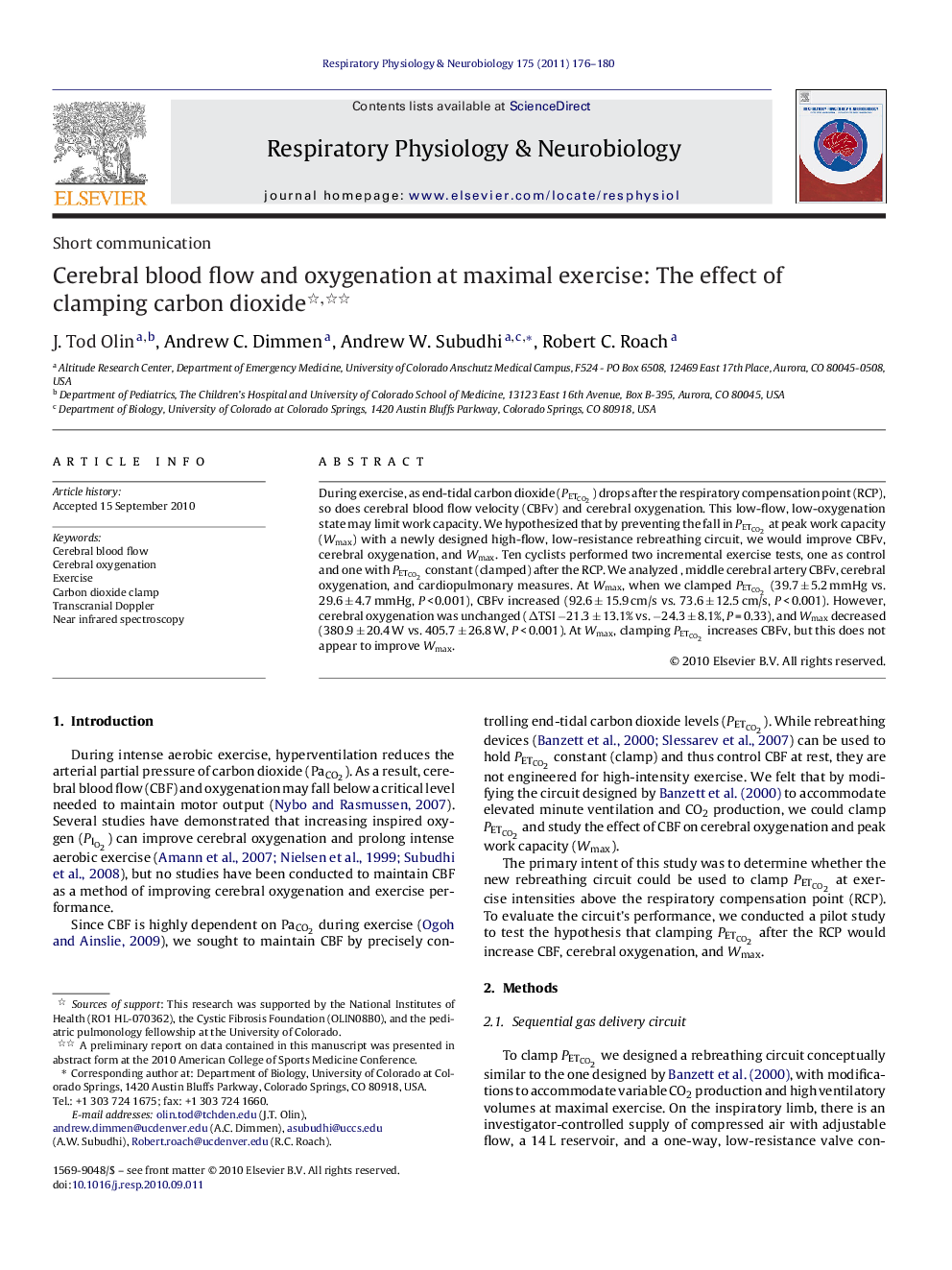| Article ID | Journal | Published Year | Pages | File Type |
|---|---|---|---|---|
| 5926585 | Respiratory Physiology & Neurobiology | 2011 | 5 Pages |
Abstract
During exercise, as end-tidal carbon dioxide (PETCO2) drops after the respiratory compensation point (RCP), so does cerebral blood flow velocity (CBFv) and cerebral oxygenation. This low-flow, low-oxygenation state may limit work capacity. We hypothesized that by preventing the fall in PETCO2 at peak work capacity (Wmax) with a newly designed high-flow, low-resistance rebreathing circuit, we would improve CBFv, cerebral oxygenation, and Wmax. Ten cyclists performed two incremental exercise tests, one as control and one with PETCO2 constant (clamped) after the RCP. We analyzed , middle cerebral artery CBFv, cerebral oxygenation, and cardiopulmonary measures. At Wmax, when we clamped PETCO2 (39.7 ± 5.2 mmHg vs. 29.6 ± 4.7 mmHg, P < 0.001), CBFv increased (92.6 ± 15.9 cm/s vs. 73.6 ± 12.5 cm/s, P < 0.001). However, cerebral oxygenation was unchanged (ÎTSI â21.3 ± 13.1% vs. â24.3 ± 8.1%, P = 0.33), and Wmax decreased (380.9 ± 20.4 W vs. 405.7 ± 26.8 W, P < 0.001). At Wmax, clamping PETCO2 increases CBFv, but this does not appear to improve Wmax.
Keywords
Related Topics
Life Sciences
Biochemistry, Genetics and Molecular Biology
Physiology
Authors
J. Tod Olin, Andrew C. Dimmen, Andrew W. Subudhi, Robert C. Roach,
